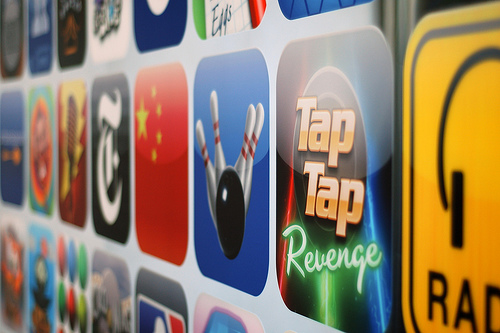 Developing an app inevitably starts with decisions needing to be made between both Android and iOS operating systems; this involves weighing their inherent pros and cons in terms of development, distribution and intended use. Whenever looking at the options for developing apps, the best course of action is one that’s taken in steps that factor in a variety of decisions ranging from what operating systems are popular amongst your user audience, what development tools are available to you and what your long-term goals are.
Developing an app inevitably starts with decisions needing to be made between both Android and iOS operating systems; this involves weighing their inherent pros and cons in terms of development, distribution and intended use. Whenever looking at the options for developing apps, the best course of action is one that’s taken in steps that factor in a variety of decisions ranging from what operating systems are popular amongst your user audience, what development tools are available to you and what your long-term goals are.
Is it more beneficial to focus on a single operating system at first?
There’s no shame in choosing to focus time and money on getting an app working right the first time on one operating system; it allows for a single area of focus as opposed to trying to work out the details over two very different operating systems at once. The benefits of having an app built natively on a specific SDK should never be underestimated; you want your app to run flawlessly.
If you find that, based on what your options and budget are, starting with a single operating system is the best course of action, there are three questions you’ll need to answer:
- Which operating system is easier for you to have your app developed on?
- Which platform is more popular with your target audience?
- What are your plans, if any, for offering your app on tablet computers?
Going with what’s immediately available to you in terms of development should provide a good idea as to which app will make the most sense to start with. Analysing mobile traffic on your sites and then choosing the most popular operating system can also tell you which version will be in greater demand.
If you wish to have your app exist either at the same time of launch or sometime soon after on tablet computers, then there’s a clearer answer: iOS is a much more attractive and serious option as the iPad has not only become the go-to device for tablet computers, but developing apps for both it and the iPhone is virtually the same thing. But this isn’t necessarily true for Android.
A major benefit from choosing one operating system first is that it gives you the opportunity to view not only the app with a fresh perspective when developing a build for the alternate operating system, but you can make sure that the app runs natively in its respective environment; this is true for both form and function.
Making sure an app looks and performs like it was made for the operating system should be a priority regardless of your development plans. Users don’t want to feel like they’re using a port that was made with something else in mind. The key facts to focus on are:
- Which operating system is most popular with the users who’ll be interested in your app.
- Quality over quantity: Make sure apps run well in their respective environments by focusing development on each system individually. Users will appreciate this in the long run.
- If tablets play a heavy role in what your app will do, iOS is more than likely going to be most logical place to start.
- Starting with one operating system can sharpen your focus and allow the same potential for future versions of the app.
Developing Cross Platform Apps
If there exists an appropriate reason to spend development time on both systems equally, there exist a few options to make this easier. Using code like JavaScript or HTML5 allows for an app that runs separate from the native language of an operating system. The catch is that such apps are often subject to being a step behind the updates and changes the operating system they’re running on will inevitably go through over time.
Popular development tools like PhoneGap work by taking advantage of the flexibility of running an app in HTML5, CSS, and JavaScript. While you can skip the process of needing to tend to the specific needs of an operating system’s SDK with this, you still miss out on the benefits of ensuring that an app is fully adapted and designed to utilise the intricacies of a native build.
Tools like Xamarin take a very different approach to cross-platform development. Instead of creating an app that works above the native build of an operating system via a different language, Xamarin’s tools divide your work equally between both Android and iOS SDKs, creating apps that work fully with native code. This is a plus; but to really take advantage of these tools it’s a good to have a working knowledge of both operating systems to get a sense for what’s going on ‘under the hood’ with Xamarin.
Thoughtful and Purposeful Development Decisions
The key to achieving success on both Android and iOS lies in thoughtful planning and decision making based on the preferences of your users, what development options are available to you and what your long term goals are. Thinking from the perspective of how the user will want to see your app and how that harmonises with your development capabilities is a valuable strategy.
For more information about app development, contact us here at Activate.




